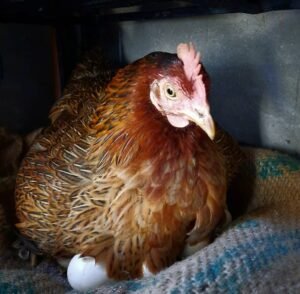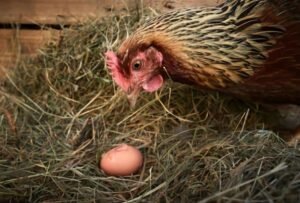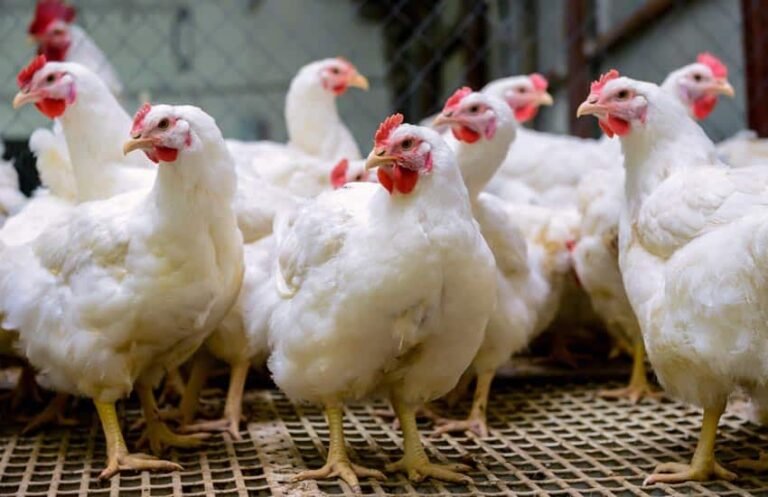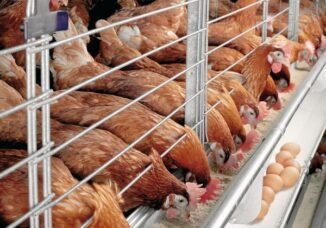Chick Heating: How to Keep Baby Chicks Warm All Day

Chick heating? What is that all about?
Is room temperature best to keep the baby chicks warm?
At what temperature will my chicks survive and thrive best?
What are the necessary pieces of poultry farm equipment required to optimize the temperature of the brooder for the baby chicks?
In our article, how to hatch chicken eggs, we x-rayed the processes involved in bringing a fertilized chicken egg to life.
Now, you have these little buddies and you want to keep or sell them off in the long run as day-old chicks, how do you keep them warm?
Is keeping them warm a necessary venture or something that can be overlooked?
Well, knowing how important this is we bring you a detailed researched article on all you need to know to keep the chicks warm and prevent chick mortality.
Achieving this feat will not only keep the chicks from dying but will also improve the sales and productivity of the farm.
Also, you wouldn’t have to have wasted your time and resources hatching eggs only for them to die due to high or low temperatures.
And as the chicks grow bigger, it’s important you know how to take care of them when they become pullets.
Without further ado, let’s find out how to keep your baby chicks warm!!!
Why chicks need to keep warm?
By nature, birds are warm-blooded animals.
What this means is that by themselves, they can maintain a consistent body temperature even if the temperature of the ambient air is chilly.
And their feathers make the insulation possible.
However, young birds do not have many feathers and so are at the risk of catching and dying from cold.
In a natural layout, the chicks will constantly use the feathers of Mother Hen for heat and protection.
But in a situation where they are hatched in an incubator and there is no Mother Hen, what do you do?
That’s where you come in as their keeper or farmer.
You need to provide artificial warmth by creating a warm environment for your chick or they will die from cold thereby raising the mortality rate of your chickens.
When such occurs you need to mimic the warmth strategy of Mother Hen artificially.
Hence the reason why you need to understand chick heating.

How do I keep my baby chicks warm?
Keeping your chicks warm is an ideal process to keep them alive after hatching.
Because chick heating is essential, the new chicks have to be kept at the optimal temperature without overheating.
How do you do that?
What necessary steps do you need to take to achieve this feat effortlessly?
Here’s how to keep your baby chick warm by heating;
1. Prepare the brooder:
From the incubator, the chicks should go straight to the brooder.
A brooder is a heated structure used for raising young fowls.
Prior to bringing the chicks out from the incubator, it’s ideal you set and prepare their brood 24 hours before their arrival.
Ensure the brooder is free from lice, mites and other parasites. See how to get rid of chicken mites.
Preparing the brooder is the first step in the chick heating procedure.
This article will help you to learn about chicken brooders and how to build a cheap one for your chickens.
2. Select the right heating lamp:
Once the brooder is set for chick heating, the next step is to select the adequate heating lamp for the brooder.
The heat lamp serves as the source of light and heat for the chicks.
Preferably, we recommend an infrared heat lamp that emits 250-watt heat.
If that is out of reach, a screw-in ceramic heater can be a viable option.
However, heat lamps such as electric heat pads, ordinary incandescent bulbs and hot-water radiators are not recommended because they do not provide reliable heat at an optimum temperature.
Besides that, they have the tendency of overheating your chicks.
In choosing the right heat lamp, purchase a red-tinted bulb instead of a white or clear bulb.
Clear bulbs keep the chicks awake thinking it’s day whereas chicks exposed to light/dark cycles are calmer and sleep better.
3. Set the heat lamp at optimum temperature:
Up next is to set your heat lamp to warm the chicks at optimum temperature.
Some farmers use two smaller-wattage lamps instead of one high-wattage lamp.
This technique is adopted to prevent totally lights out.
When one light goes off, the other can still supply heat for the chicks.
The optimum temperature to set the heat lamp in the first week is at 92 – 95°F.
Once the temperature is set at the ideal temperature, your chicks will keep warm once you mount the lamp.

4. Mount the heat lamp:
After setting the heat lamp, next is to mount the lamp.
First, you have to insert the bulb into a metal reflector with an adjustable clamp and ceramic socket.
Hang or mount the lamp above ground level facing down into the enclosure.
For best results, we recommend you shine the lamp on one side of the enclosure so the baby chicks can self-regulate their temperature by moving from the cool end when they feel too hot and vice versa.
Also, mount the lamp at a strategic point where the heat can warm all the chicks.
Hence the reason one bulb is not advised is if you have a larger brooder.
Get, set and mount the heat lamps at a strategic place and enough to warm all the chicks.
Ensure you mount the heat lamp in such a way it won’t fall or come in contact with anything flammable.
5. Regulate the temperature as they grow:
Now, your chicks are warmer and growing at the same time.
Keep an eye on them to know when they are overheating.
Overheating or low temperature calls for constant temperature regulation till the chicks no longer need to be warmed by heat.
To regulate the chicks heating temperature, regulate it thus;
| Age (weeks | Ideal Temperature |
| 1 | 92 – 95°F |
| 2-3 | 85 – 90°F |
| 3-5 | 80 – 85°F |
| 5-8 | 70 – 80°F |
| 8- | room temperature |
How do you regulate the heating lamp?
Simply fine-tune your brooder box’s temperature by adjusting the knob up and down.
If you are using charcoal to heat the brooder, then you need to take out some of the charcoal burners to keep the temperature down.
With these sets, your brood is ready to receive and keep your baby chicks warm till they no longer need heat.
Start the heating chick lamp a day prior to adding your chicks.
How do I know when to regulate the temperature of the brooder?
There is a recommended temperature to keep the baby chicks warm each week as researched by Virginia Tech’s Cooperative Extension Program.
However, we do not recommend a quick change in temperature just because the new week says so.
Before adjusting the brooder temperature, here’s what to give you a clue to go ahead or maintain the same temperature;
1. Monitor the chick’s behaviour:
Basically, the behaviour of the chick will tell you when to increase or reduce the temperature of the brooder.
Hence the reason why you should monitor your chicks’ behaviour.
If the chicks are comfortable, they will spread themselves less or more evenly throughout the brooding area.
Besides that, cold chicks will cuddle up together beneath the lamp.
Whereas if they are overheated, they will stand apart not just from themselves but from the lamp too.
The behaviour of the chicks will convey the “reduce or increase the temperature” message to you.
2. Inspect the legs of the chicks:
If the chicks are not conveying any message from their behaviour, look at their legs.
How does that tell?
Looking at the legs of the chicks’ legs will give you a clue of their temperature preference.
Once you touch the legs of cold chicks, they will be cold, swollen or puffed up.
Whereas if they are overheated, their legs will appear dry, dehydrated or thin.
Do not make the mistake of using your body temperature to regulate the brood temperature for the baby chicks.
With that being said, these clues will help you regulate the temperature as and when needed.

How do you keep baby chicks warm without a heat lamp?
Can I keep my baby chicks warm without a heating lamp?
Yes, you can keep your chicks warm without a heat lamp.
Some options to explore include;
1. Use of hot water bottles:
Heat 2 or 3 hot water bottles, insulate them with a towel and place them in the brooder.
These hot water bottles serve as a source of heat.
However, you have to insulate them so the chicks will not have direct access to them to prevent burns.
This option will not be efficient in an unheated building because you need a relatively high ambient temperature.
2. Warm the birds using brooders:
By getting a brooder you can warm your baby chicks without a heat lamp.
Brooders provide chicks with optimal heat, unlike the heat lamps which can overheat.
They are safe and cost less to run.
3. Use heated pads:
Another alternative to using a heating lamp for your chicks is to use heated pads.
When the chicks are 1 month old, the heated pads can be introduced.
How does it work?
Attach the pad to the wall of the brooder.
This will warm the brooder ambiently.
4. Keep a crowd:
Another way to warm the chicks without a heat lamp is to keep a crowd of chicks.
A group of chicks can warm themselves more than smaller groups.
This is a natural way for the chicks to keep warm.
5. Provide the chicks with nice thick beds:
A nice thick chicken bed will help keep the chicks warm.
It should be soft and deep.
Employing these techniques helps you keep your furry chicks warm without having to use a heating lamp.
Frequently asked questions about heating your chicks
How do I monitor the temperature of the brooder?
There are so many ways to checkmate the temperature of the brooder.
However, the most ideal way to monitor the temperature of the brooder is to use a non-breakable thermometer placed at chick height to determine the heat lamp placement.
How do I know the chicks are overheating?
If the chicks add overheating, here’s how you can tell;
- The chicks stand apart from each other.
- Also, you see them staying far away from the heating lamp.
- Besides that, you will see them panting with their beaks open.
- Also, you will notice their legs are thin, dry and dehydrated.
- The last but not the least clue of overheating is that the chicks will be drinking more water.
These signs spell out that the chicks are overheating.
Simply adjust the lamp accordingly until the chicks are comfortable.
How do you keep chicks warm naturally?
A natural way to keep the chicks warm is by;
- Keeping a crowd of chicks.
- Or allowing Mother Hen to do the job. (Silkie Chickens will gladly volunteer for such)

How do you keep a brooder warm?
You can keep a brooder warm by regulating the brooder temperature or by using a heating pad
Do baby chicks need a heat lamp 24 hours?
Partially.
Depending on the ambient air temperature and weather, you might want to turn off the heat lamp at some point in a day.
How do you keep chicks warm at night?
To keep chickens warm at night, simply use a red-tinted bulb.
This helps the baby chicks sleep better and they are less likely to peck feathers.
Can baby chickens get too hot?
Yes, baby chicks can get too hot and when that happens it’s called overheating.
Once the chicks are overheated you can get a small chicken lap for dinner and that means more death.
It’s expedient you monitor the temperature of the brooder to avoid overheating.
What happens if baby chicks get too cold?
When baby chicks get cold, their legs get puffy or swollen and their legs cold as ice.
Subsequently, this can lead to death.
Can I use a heating pad to keep chicks warm?
Yes, you can use varying pads to keep the chicks warm.
It’s an alternative for heating lamps.
Why are my baby chicks chirping so much?
Chirping from baby chicks is a sign of a cold.
So you might want to take that message and adjust the temperature to keep the birds comfortable.
Can baby chicks sleep with the heat lamp on?
Yes, baby chicks can sleep with beat lamps on.
However, it must be a red-tinted lamp.
Summary
Effortlessly you can keep your baby chicks warm just by heating up the brooder and using the right heating lamp.
Remember to choose your heating lamp carefully according to wattage.
Have you ever suffered from overheating?
Share with us in the comment section, we will like to hear from you.
References
- 12 Best Chicken breeds for Eggs – chicken breeds for eggs
- When Do Chickens Start Laying Eggs Regularly?
- How Many Eggs Does A Chicken Lay In A Week?
- Fermenting chicken feed – The definitive guide
- 10 Sure Ways To Stop Chickens from Eating Their Eggs [+Bonus]
- 6 Best Chicken Egg Incubators for Chicken Eggs and Other Birds











